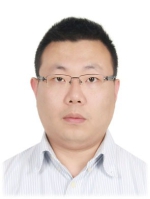YAN Nan
Date:19-07-2017 | 【Print】 【close】

Experience
Education
2005-2009 PhD, Department of Biomedical Engineering, Xi'an Jiaotong University
2002-2005 M.Eng, Department of Biomedical Engineering, Xi'an Jiaotong University
1998-2002 B.Sc., Department of Biomedical Engineering, Xi'an Jiaotong University
Work Experience
2012-pres. Research Associate Professor, Shenzhen Institutes of Advanced Technology, Chinese Academy of Sciences.
2009-2012 Postdoctoral Fellow, Division of Speech and Hearing Sciences, University of Hong Kong
Research Interests:
Yan Nan’s general research interests lie in the areas of Speech and Language Processing, Acoustical Analysis, Objective Assessment for Voice Disorders, Speech Rehabilitation System, Speech Cognitive Neuroscience. His current research focuses on objective assessment of pathological voices using acoustic analysis and machine learning methods; study on the acoustic, kinematic and aerodynamic characteristics in individuals with articulation inaccuracy as in dysarthrics; developing more effective rehabilitation regimes for voice/speech disorders, investigating the brain changes in clinical populations such Aphasia and Dementia by using (including eye-tracker, ERPs, EEG, fNIRS) and neural impairment and neuroplasticity mechanism in communication disorders.
Representative Publications:
1. Chen,F, Peng,G.*, Yan, N.*, Wang,L. (in press) “The development of categorical perception of Mandarin tones in four- to seven-year-old children”, Journal of Child Language.
2. Huang, X.#, Chen, X. #, Yan, N. #, Jones, J. A., Wang, E. Q., & Chen, L., et al. (2016). The impact of parkinson's disease on the cortical mechanisms that support auditory–motor integration for voice control. Human Brain Mapping, 37(12), 4248-4261.
3. Li, W. #, Chen, Z. #, Yan, N.#, Jones, J. A., Guo, Z., & Huang, X., et al. (2016). Temporal lobe epilepsy alters auditory-motor integration for voice control. Scientific Reports, 6.
4. Wang, Z., Yu, P., Yan, N.*, Wang, L., & Ng, M. L. (2016). Automatic assessment of pathological voice quality using multidimensional acoustic analysis based on the grbas scale. Journal of Signal Processing Systems, 82(2), 241-251.
5. Yan, N.* & Manwa L. Ng, “Identification of accent in spoken English by Cantonese ESL speakers.(2015) WIT Transactions on Information and Communication Technologies.2015, vol 74. 447-454
6. Yan, N.,* Ng, M.L., Wang, D., Chan, V., Zhang L. & Ho, C. (2013) Nonlinear dynamical analysis of laryngeal, esophageal and tracheoesophageal speech of Cantonese. Journal of Voice. 27:101-110.
7. Yan, N.*, Ng, M. L., Man, M. L., &Hin, T. T. (2013) Vocal tract dimensional characteristics of professional male and female singers with different types of singing voices. International Journal of Speech-Language Pathology. 15(5), pp.484-491.
8. Tian,L., Yan, N., Chen,Y., Wang,J.* (2013).Multichannel linear descriptors analysis for sustained attention-related electroencephalography. NeuroReport, Vol. 24(11), pp: 631-635.
9. Yan, N., Lam, P. K. Y.,& Ng, M.L. (2012)Pitch control in esophageal and tracheoesophageal speech of Cantonese, Folia Phoniatrica et Logopaedica,64:241-247.
10. Yan, N., Wang J., Liu, M., Zong, L., Jiao, Y., Yue, J., Lv, Y., Yang, Q., Lan, H. & Liu, Z. (2008). Designing a brain-computer interface device for neurofeedback using virtual environments.Journal of Medical and Biological Engineering 28(3): 167-172.
Intelligent Property
1. Zhang D., Yan N., Wang L. and Wang ZJ.,Methods, System and Instrument for dysarthria assessment. National Invention Patent of China, CN 201310713782.9,2015.11.18.
2. Mao Y., Wang L., Yan N. and Xie XR., An adaptive method and platform for language training. National Invention Patent of China, CN 201310627536.1,2016.08.17
3. Liu SS., Yan N., Wang L. and Wang ZJ.,A method and system for detection voice disorders. National Invention Patent of China, CN201310713471.2,2014.04.16.
4. Yan N. and Wang L., An evaluation method and system for Speech language impairment based on multimodal interaction. National Invention Patent of China,
Award:
2015 Shenzhen Overseas High-Caliber Personnel (Level C).
